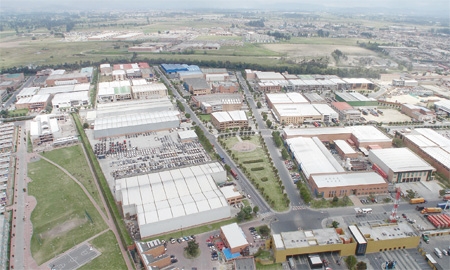Once ratified, the comprehensive free trade agreement (FTA) between the United States and Colombia will eliminate tariffs and other barriers to trade in goods and services, promoting economic growth and job creation for both nations.
“The FTA is an opportunity for Colombia to move itself onto a positive fast track,” says Alvaro Uribe Velez, 58th President of Colombia from 2002-2010, under whom the proposed U.S.-Colombia FTA was originally signed. “The agreement will challenge and enable Colombia to start projects on its infrastructure that we have always wanted to do but have not been able to execute.”
Colombia’s economy is the third largest in Central and South America and already has an important economic relationship with the U.S. Goods and services exports from the U.S. to Colombia in 2010 were $12 billion. Both economies are largely complementary regarding the goods exchanged. Colombia imports grains from the U.S. while it exports a number of tropical fruits. The U.S. exports cotton, yarn, and fabric to Colombia that is used in many apparel items that Colombia exports back to the U.S.
The International Trade Committee has estimated that the tariff reductions in the passing of this agreement will provide significant new access to Colombia’s $166 billion service market, supporting increased opportunities for U.S. service providers. In general, the agreement will support more American jobs, increase exports, and enhance competitiveness.
Camilo Reyes, the executive director of the Colombian-American Chamber of Commerce, says, “The FTA not only has all the meaning of the world from the point of view of exports, trade and investment; it also has a meaning from the political point of view – to overcome a vision in which the U.S. and Latin America were not able to work together as two major blocs and furthermore there was a certain polarization between them.”
“Signing the FTA will help us work tirelessly on the areas of common interest such as the environment, technology transfer and education,” says President Santos. The United States has to look south more often. That is where their true strategic interests lie. There is great potential waiting at the south of Rio Grande to exploit the goods the world is demanding right now such as energy, biodiversity, and food production amidst a young population and a growing market. There is a natural synergy amongst the Americas and I believe it should be exploited more efficiently.”
The FTA is a huge historical opportunity for Colombia for many reasons. Over 80% of U.S. exports of consumer and industrial products to Colombia will become duty free immediately, with remaining tariffs phased out over 10 years.
Many agricultural commodities will also benefit from the agreement, as more than half of the current U.S. farm exports to Colombia will become duty free immediately and all remaining tariffs will be eliminated within 15 years.
In addition to the FTA with Colombia, the U.S. has pending trade agreements with Panama and South Korea also waiting to be ratified. Currently, however, these trade agreements with all three countries remain stalled in the U.S. Congress as a result of ideological differences between the Republican and Democratic parties.
According to the International Trade Committee, total net benefits that would come from these trade agreements amount to around $13 billion.
On July 7, the U.S. Senate Finance Committee voted to approve the U.S.-Colombia FTA bill in a mock markup session.
“We applaud the bipartisan majorities in the U.S. Senate committee in favor of the FTA,” responded President Santos.
0 COMMENTS